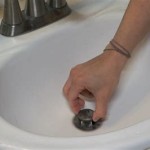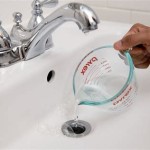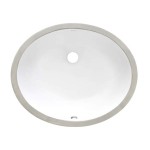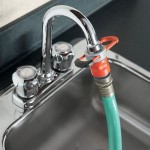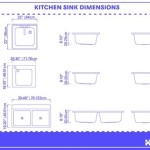Free Standing Kitchen Sink With Drainboard: An Overview
A free standing kitchen sink with drainboard is a self-contained unit, offering a practical and often more affordable alternative to built-in sinks that are integrated into countertops and cabinetry. This type of sink typically includes a sink basin, a drainboard (a sloped surface adjacent to the sink for draining washed items), a support structure, and sometimes additional features such as storage shelves or cabinets. Free standing sinks are frequently used in locations where installing standard cabinetry and countertops is either impractical or unnecessary, such as in garages, workshops, laundry rooms, outdoor kitchens, or smaller kitchens with limited space.
The distinct advantage of a free standing sink with a drainboard lies in its portability and ease of installation. Unlike integrated sinks, these units can be moved from one location to another with relative ease. The installation process is primarily limited to connecting the sink to a water supply and drain line, which bypasses the need for complex countertop cutting and cabinet fitting typically associated with integrated sink systems.
The designs for these sinks are varied, ranging from simple, utilitarian models made from stainless steel, suitable for heavy-duty use, to more aesthetically pleasing designs constructed from materials like porcelain or composite materials, which are better suited for more visually prominent locations within a home. The choice of material and design dictates not only the sink's durability and functionality but also its overall visual appeal and suitability for specific applications.
Key Point 1: Advantages of Free Standing Sinks with Drainboards
One of the most significant advantages of a free standing sink with a drainboard is its cost-effectiveness. Generally, these sinks are less expensive than built-in sinks, as they eliminate the need for extensive cabinetry and professional installation. The purchase price of the sink itself is often lower, and the simplified installation process reduces labor costs.
Another key advantage is their flexibility. Free standing sinks can be easily relocated if necessary, making them ideal for temporary setups or situations where the layout of a space may change over time. This is particularly useful in rental properties or in homes where homeowners anticipate future renovations or modifications.
Furthermore, these sinks offer ease of installation. While connecting the water supply and drain line may require some plumbing knowledge, the process is generally straightforward and can often be completed by a homeowner with basic DIY skills. This drastically reduces the dependency on professional plumbers and their associated costs. In contrast, installing a built-in sink usually requires precise measurements, specialized tools, and a skilled installer to ensure a watertight and aesthetically pleasing result.
Key Point 2: Materials and Construction
The materials used in the construction of a free standing kitchen sink with drainboard significantly impact its durability, appearance, and maintenance requirements. Stainless steel is a popular choice due to its resistance to corrosion, stains, and heat. Stainless steel sinks are also relatively easy to clean and maintain, making them ideal for high-use environments. The gauge of the stainless steel (the thickness of the metal) is a crucial factor in determining its durability. Lower gauge numbers indicate thicker steel, which is more resistant to dents and scratches.
Porcelain sinks offer a more traditional and aesthetically pleasing appearance. They are typically made from cast iron or fireclay coated with a layer of porcelain enamel. Porcelain sinks are available in a variety of colors and styles, allowing for a wider range of design options. However, porcelain is more susceptible to chipping and cracking than stainless steel, and can require more careful handling and maintenance.
Composite materials, such as granite composite or quartz composite, offer a balance of durability and aesthetics. These materials are made from a mixture of natural stone particles and resin, resulting in a sink that is resistant to scratches, stains, and heat. Composite sinks are also available in a variety of colors and textures, making them a versatile option for different kitchen styles.
The construction of the support structure is also a crucial consideration. The support frame, typically made from stainless steel or painted metal, must be strong enough to support the weight of the sink basin and any items placed on the drainboard. The design of the support structure can also impact the overall stability and aesthetics of the sink. Some models feature adjustable feet, allowing for leveling on uneven surfaces.
Key Point 3: Considerations When Choosing a Free Standing Sink
When selecting a free standing kitchen sink with a drainboard, several factors should be carefully considered to ensure the chosen sink meets the specific needs of the intended application. The size of the sink basin is a primary consideration. If the sink is to be used for washing large pots and pans, a larger and deeper basin will be necessary. Conversely, for smaller tasks, a smaller basin may be sufficient and save space.
The location of the drainboard is another important factor. Most sinks have a drainboard on either the left or right side of the basin, which can impact the workflow and efficiency of the sink. The user should consider their handedness and the layout of the surrounding work area when choosing the drainboard location.
The presence of additional features, such as storage shelves or cabinets, can also influence the choice of sink. Some models include open shelves or enclosed cabinets beneath the sink basin, providing additional storage space for cleaning supplies, dish soap, or other kitchen essentials. These features can be particularly useful in smaller kitchens where storage space is limited.
The ease of cleaning and maintenance should be a significant consideration. Sinks with smooth, non-porous surfaces are generally easier to clean and less prone to stain accumulation. The design of the sink basin and drainboard should also allow for easy access to all areas for cleaning. Stainless steel sinks are often preferred for their ease of cleaning and resistance to stains.
Finally, the aesthetics of the sink should be considered, especially if the sink is to be placed in a visually prominent location. The choice of material, color, and style should complement the overall design of the surrounding space. While stainless steel sinks offer a utilitarian look, porcelain and composite sinks offer a wider range of design options.
Beyond these core considerations, the plumbing requirements must be evaluated. Verification of existing water supply lines and drain connections is necessary before purchasing a free standing sink. The distance between the water supply lines and the sink location, as well as the diameter of the drainpipe, should be identified to ensure compatibility. Altering the plumbing may necessitate professional assistance, potentially adding to the total cost of installation.
The durability and warranty offered by the manufacturer are also crucial factors. Opting for a sink made from high-quality materials and backed by a comprehensive warranty provides assurance of long-term performance and protection against potential defects. Reviewing customer reviews and ratings can also provide valuable insights into the sink's reliability and the manufacturer's customer service.
Lastly, adherence to local plumbing codes and regulations is paramount. Before installing a free standing sink, it is advisable to consult with a qualified plumber or building inspector to ensure compliance with all applicable codes and regulations. Failure to comply with these requirements can result in fines or mandatory modifications.
The installation process, while generally straightforward, can vary depending on the specific model and the existing plumbing infrastructure. Some free standing sinks may require minor assembly, such as attaching the legs or connecting the drainpipe. Detailed instructions are typically provided by the manufacturer, but professional assistance may be necessary if the installer lacks plumbing experience.
Therefore, choosing a free standing kitchen sink with drainboard requires careful consideration of various factors, including the size of the basin, the location of the drainboard, the available storage features, the ease of cleaning, the aesthetics, the plumbing requirements, the durability and warranty, and the compliance with local plumbing codes. By thoroughly evaluating these considerations, the homeowner can select a sink that effectively meets their needs and provides years of reliable service.

33 Pearlhaus Stainless Steel Single Bowl Freestanding Sink With Drainboard Lower Rack

Freestanding Kitchen Sink Stainless Steel Single Bowl W 2 Drainboards

Vevor Stainless Steel Utility Sink Free Standing Single Bowl Kitchen Set With Workbench 39 4 X 19 1 37 In

Vevor Stainless Steel Utility Sink 39 4 X 19 1 37 In Free Standing Single Bowl Kitchen Nsf Certified Dscdgztydc394bj9uv0 The Home

33 Pearlhaus Stainless Steel Single Bowl Freestanding Sink With Drainboard Lower Rack

Koolmore Stainless Steel 2 Basin Freestanding Utility Tub With Drain

Dextrus Kitchen Sink Stainless Steel Single Bowl With Drainboard Freestanding For Restaurant Laundry Garage Work

33 In One Compartment Stainless Steel Sink With Drainboard Koolmore

Dextrus Kitchen Sink Stainless Steel Single Bowl With Drainboard Freestanding For Restaurant Laundry Garage Work

Koolmore Sb121610 16r3 2 Compartment Stainless Steel Nsf Kitchen Prep Utility Sink With Drainboard Bowl Size 12 X 16 10 Silver
